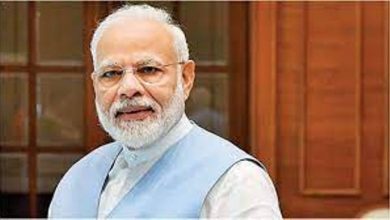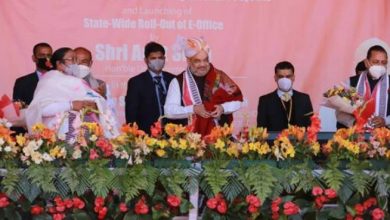Multi pronged strategy adopted by government to combat child labour: Heeralal Samariya
New Delhi: On the day of World Day against Child Labour on June 12, 2019 the Ministry of Labour and Employment and V.V. Giri National Labour Institute in collaboration with the International Labour Organization, New Delhi organised a ‘Technical Consultation on Evolving Strategies to achieve the Sustainable Development Goal, Target 8.7 and Elimination of Child Labour in India’.
The Theme of World Day against Child Labour for the year 2019 is ‘Children shouldn’t Work in Fields, but on Dreams’ which focuses on the importance of ending child labour and calls for evolving strategies to end child labour.
Shri Heeralal Samariya, Secretary, Ministry of Labour and Employment, in his inaugural address said that government is adopting a multi prong strategy to combat the problem of Child Labour and emphasized on the importance of implementation of the various acts and rules to eliminate the child labour. He said the ideal place for a child is school and not work. The secretary further said that government has enacted the Child Labour (Prohibition and Regulation) Amendment Act, 2016 which came into force with effect from September 01, 2016. Now the employment of a Child below 14 years is completely prohibited in any occupation or processes. The Amendment prohibits the employment of adolescent (14-18 years) in hazardous occupations and processes. He further said that census 2011 shows decline in Child Labour which has come down to 1.01 crore as compared to 1.26 crore in 2001.
The Song on the Elimination of Child Labour, developed by the ILO and the Video-clip on the Elimination of Child Labour developed by the Child Labour Division, Ministry of Labour and Employment were launched on this occasion, apart from quarterly newsletter ‘Child Hope’ of VVGNLI.
Dr. Dagmar Walter, Director of ILO, New Delhi appreciated the efforts taken by the Government of India in ratifying the ILO Conventions 182 and 138. ILO Convention No. 138 inter-alia prescribes that there should be a minimum age of entry to employment which should not be less than age of compulsory education or 15 years (relaxable to 14 years in the case of developing countries). ILO Convention 182 inter-alia, mentions the minimum age for working in hazardous occupations as 18 years. As on date, 167 countries across the world have ratified ILO Convention 138 and 179 countries have ratified ILO Convention 182.
Ms. Kalpana Rajsinghot, Joint Secretary, Ministry of Labour and Employment discussed about the various policy initiatives and schemes introduced by the Government of India, towards elimination of child labour. She said that National Child Labour Project (NCLP) aims to eliminate all forms of child labour through identification and preparing children withdrawn from work for main stream education along with vocational training. An online portal, PENCIL, was launched on 26.09.2017 for better monitoring & reporting system to ensure effective implementation of the provisions of the amended Child Labour (Prohibition & Regulation) Act, 1986 and National Child Labour Project (NCLP) Scheme. All operational Project Societies of NCLP are registered on the portal for better implementation of NCLP scheme aimed at educational rehabilitation of child and adolescent labour.
Dr. H. Srinivas, Director General in his welcome address set the tone for the Technical Consultation by highlighting that though poverty has been one of the important factors of the cause of child labour, change in the mindset and attitude of the society towards this problem, could go a long way in ameliorating the problem.
During the Technical Session, Shri Insaf Nizam, Child Specialist, ILO and Dr. Helen Sekar, Senior Fellow, V. V. Giri National Labour Institute shared various technicalities of the child labour problem.


